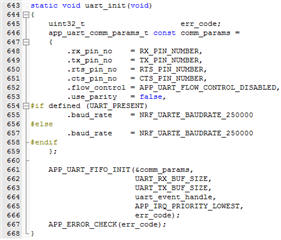Hi,
DMX512 protocol is USITT(United States Institute for Theater Technology)Prescribed agreement
I want to follow this agreement to design
============ DMX512 protocol:
Baud:250K
Break:88us
MAB:8us
============ Data frame contains:
Start:1 bit
Data:8 bit
Stop:2 bit
Parity:None


I know that this design will still have errors.
I hope to give me some help, the project is urgent, thanks
Another stop bit need 2 bit, is it necessary to operate directly with registers?
(But the SDK is full of library operations?)


